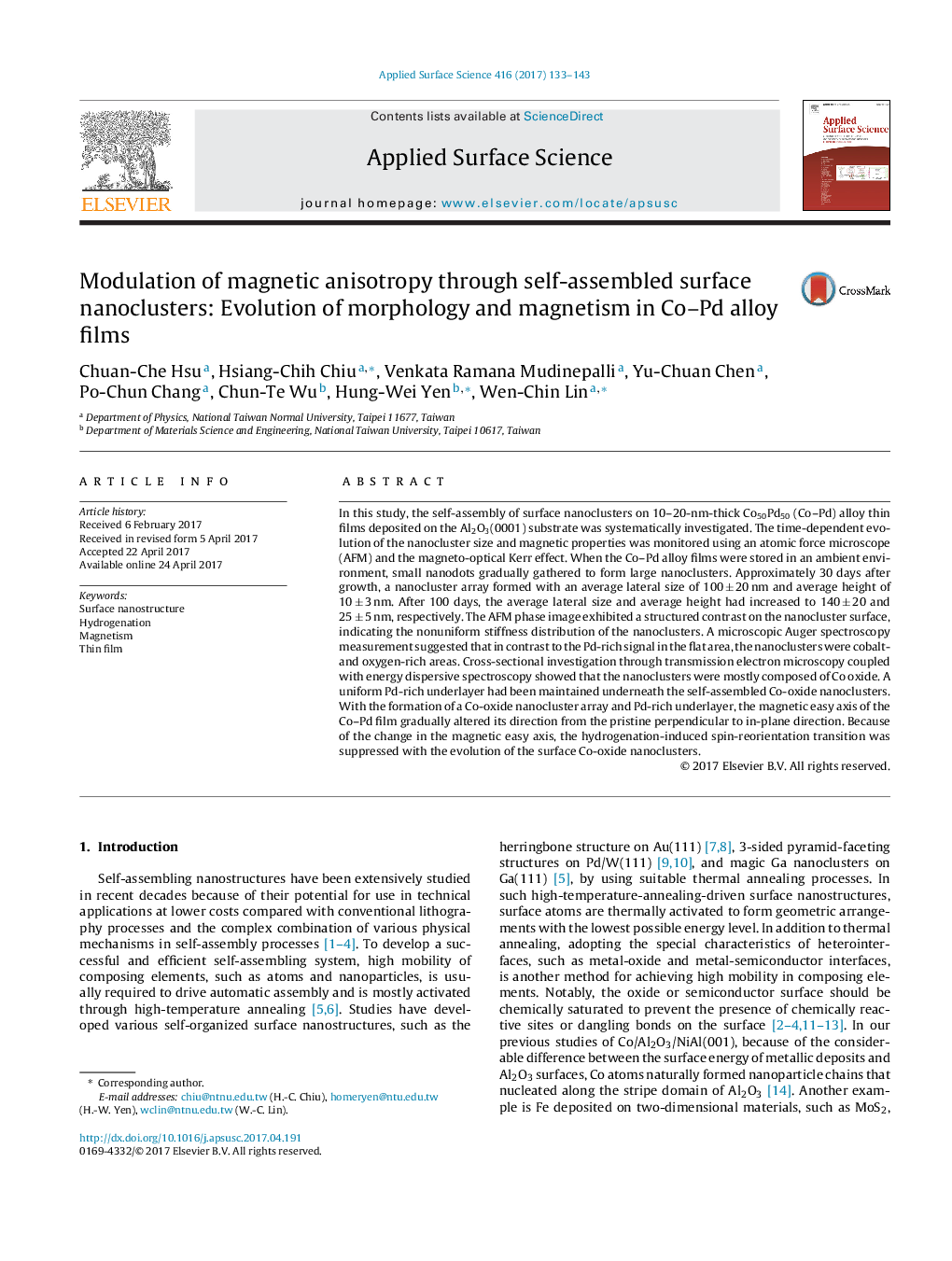| کد مقاله | کد نشریه | سال انتشار | مقاله انگلیسی | نسخه تمام متن |
|---|---|---|---|---|
| 5350426 | 1503553 | 2017 | 11 صفحه PDF | دانلود رایگان |
عنوان انگلیسی مقاله ISI
Modulation of magnetic anisotropy through self-assembled surface nanoclusters: Evolution of morphology and magnetism in Co-Pd alloy films
دانلود مقاله + سفارش ترجمه
دانلود مقاله ISI انگلیسی
رایگان برای ایرانیان
کلمات کلیدی
موضوعات مرتبط
مهندسی و علوم پایه
شیمی
شیمی تئوریک و عملی
پیش نمایش صفحه اول مقاله

چکیده انگلیسی
In this study, the self-assembly of surface nanoclusters on 10-20-nm-thick Co50Pd50 (Co-Pd) alloy thin films deposited on the Al2O3(0001) substrate was systematically investigated. The time-dependent evolution of the nanocluster size and magnetic properties was monitored using an atomic force microscope (AFM) and the magneto-optical Kerr effect. When the Co-Pd alloy films were stored in an ambient environment, small nanodots gradually gathered to form large nanoclusters. Approximately 30 days after growth, a nanocluster array formed with an average lateral size of 100 ± 20 nm and average height of 10 ± 3 nm. After 100 days, the average lateral size and average height had increased to 140 ± 20 and 25 ± 5 nm, respectively. The AFM phase image exhibited a structured contrast on the nanocluster surface, indicating the nonuniform stiffness distribution of the nanoclusters. A microscopic Auger spectroscopy measurement suggested that in contrast to the Pd-rich signal in the flat area, the nanoclusters were cobalt- and oxygen-rich areas. Cross-sectional investigation through transmission electron microscopy coupled with energy dispersive spectroscopy showed that the nanoclusters were mostly composed of Co oxide. A uniform Pd-rich underlayer had been maintained underneath the self-assembled Co-oxide nanoclusters. With the formation of a Co-oxide nanocluster array and Pd-rich underlayer, the magnetic easy axis of the Co-Pd film gradually altered its direction from the pristine perpendicular to in-plane direction. Because of the change in the magnetic easy axis, the hydrogenation-induced spin-reorientation transition was suppressed with the evolution of the surface Co-oxide nanoclusters.
ناشر
Database: Elsevier - ScienceDirect (ساینس دایرکت)
Journal: Applied Surface Science - Volume 416, 15 September 2017, Pages 133-143
Journal: Applied Surface Science - Volume 416, 15 September 2017, Pages 133-143
نویسندگان
Chuan-Che Hsu, Hsiang-Chih Chiu, Venkata Ramana Mudinepalli, Yu-Chuan Chen, Po-Chun Chang, Chun-Te Wu, Hung-Wei Yen, Wen-Chin Lin,